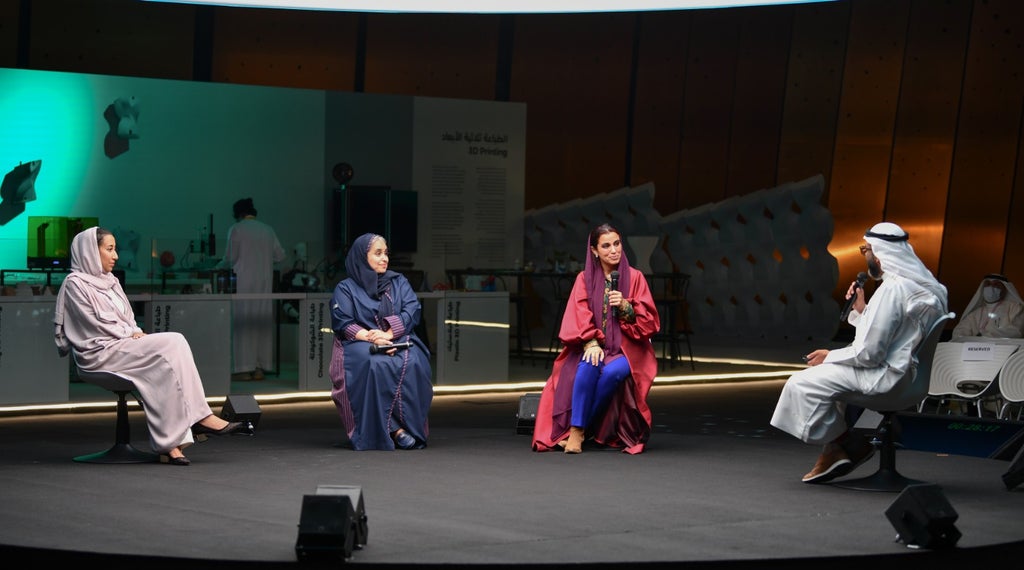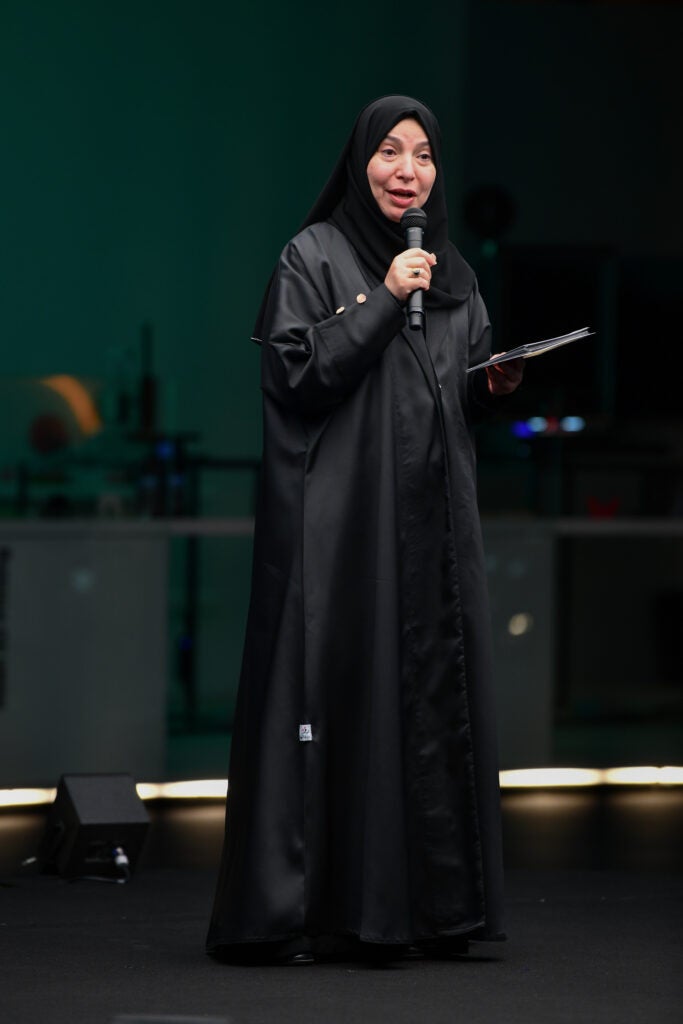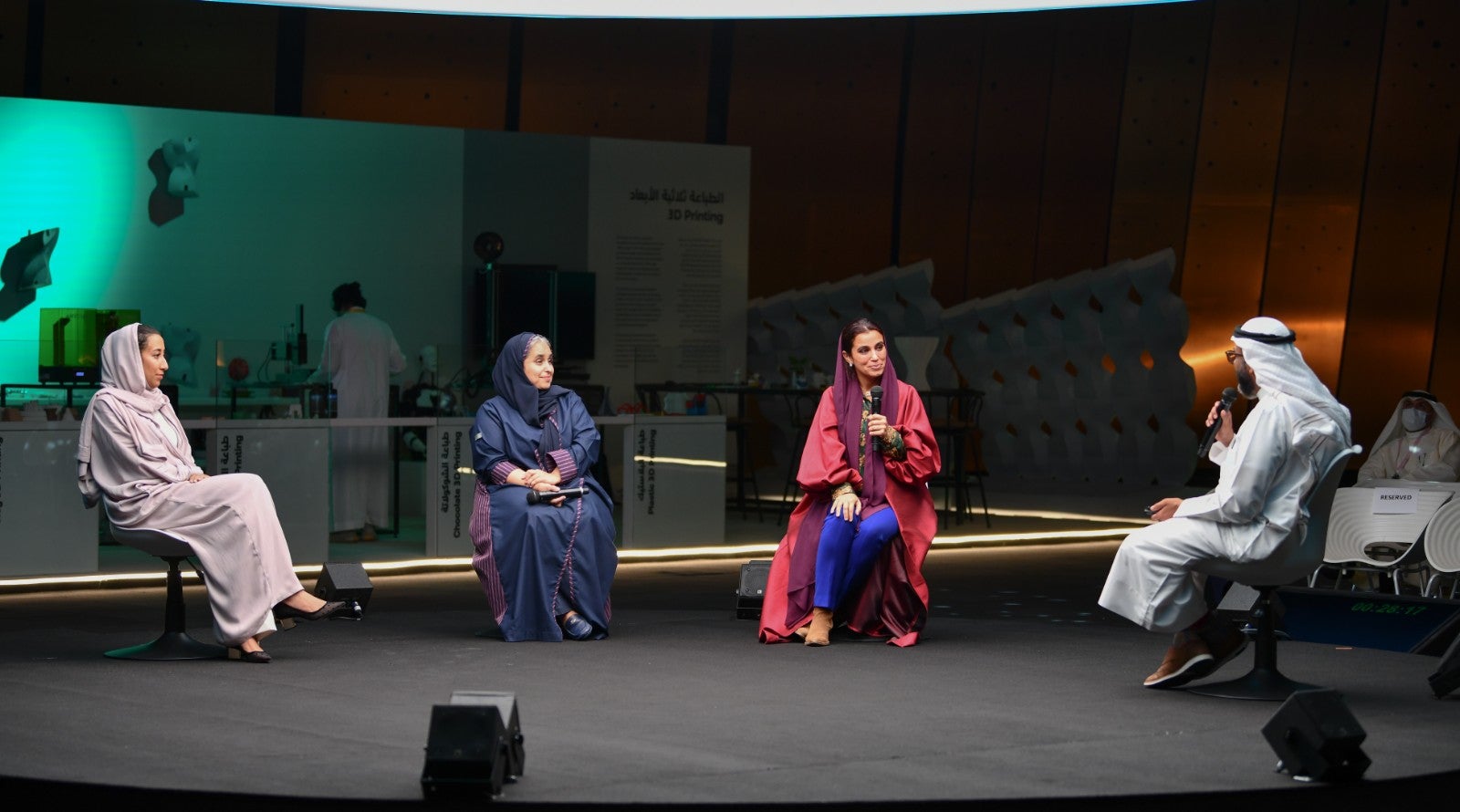
Ithra is a Business Reporter client
A quick glance at the journey that Saudi Arabia’s cultural and creative sector have undertaken over the past five years shows how an industry that, until only recently, was seen as relatively marginal has now become a major component of the kingdom’s economy and of its vision for the future.
Despite the setbacks caused by the Covid-19 pandemic to creative and cultural industries across the globe, and threats that cinema chains, theatres, art galleries and other creative spaces would not recover to pre-Covid levels, the Middle East and North Africa region (MENA) continued to prosper. In Saudi Arabia in particular, where the creative industry has been one of the country’s fastest-growing industries, the sector found innovative ways to keep going, to build its own success story.
Part of this is down to the resilience of the kingdom’s sectors – museums launched a wide variety of virtual experiences, government entities stepped in with a range of support and local programmes, and the creative output of Saudi citizens and residents soared. Another strong point was the momentum the sectors had gathered in the preceding years. The General Entertainment Authority had been established in 2016, and the Ministry of Culture in 2018. The King Abdulaziz Center for World Culture, Ithra, originally founded in 2008 as a CSR initiative by Aramco to promote innovation, community, culture and knowledge, also opened its doors to the public in 2018. The inaugural edition of Saudi Seasons, a diverse calendar of entertainment events and cultural activities that attracted more than 50 million visitors, was launched the following year in 2019. All told, the kingdom’s creative and culture industries, otherwise known as CCI, have been growing at a rate of 13 per cent annually.
As a leading cultural think tank in the region, Ithra wants to promote a greater understanding of how cultural and creative industry performance is evolving in Saudi Arabia and regionally. Having led research with partners, it recently launched three reports that capture the current state of cultural offering and consumption in the MENA region, as well as a Saudi Arabia cultural and creative landscape mapping report. This latter report introduces a CCI index on Saudi Arabia and assesses the CCI landscape across different dimensions and sub-sectors in Saudi. Its aim is to establish the baseline and track the future progress of the kingdom. It has also developed a report on the impact of Covid on cultural industries.

Fatima Rashid, Head of Advisory Board, Ithra
“Since its inception, Ithra has established itself as a cultural catalyst and global gateway. As such, we are uniquely interested in the state of the CCI and the realities facing the industry,” says Fatmah Alrashid, Head of Strategy at Ithra.
Speaking of the series of reports, she noted: “Through highlighting key insights, facts on and analysis of the production, consumption and enabler aspects of the sector, the study can be a resource for policymakers as well as the public, shifting mindsets and inspiring dialogue around the state of the industry.”
The published research shows that the cultural landscape has been evolving differently across the MENA region, while cultural participation remains on the rise. 90 per cent of MENA respondents expressed that cultural participation is important to them, while three-quarters even go so far as to value it higher than television, sport and other forms of entertainment.
The cultural growth prospects are highest in the United Arab Emirates (Dubai, Sharjah), the Kingdom of Saudi Arabia (Dammam, Jeddah, Riyadh), and Egypt (Cairo).
The report also uncovers several theme-specific trends related to cultural demand and consumer preferences across the MENA region. These include:
- History and heritage emerging as popular themes, with 44 per cent of respondents visiting history and heritage sites in the past 12 months
- Film and television came out as the second most popular area, with 20 per cent of youth wanting to visit cinemas, studios, and film festivals
The CCI index serves as a vital analytical tool in the arsenal of the kingdom’s public and private sector as the transformation of its cultural and creative industries continues. In recent years, CCI in Saudi Arabia has witnessed major efforts to introduce public policies and funding that would support the sector’s development. Strong governmental support made “Public Policies and Regulations” the highest-scoring category, with a score of seven out of ten.
The economic contribution and potential vary across different sectors, but most show signs of positive recent development across key indicators. These include:
- Video games exceeded $1 billion in revenues in 2019, growing by 41 per cent since 2017
- People in Saudi are the biggest users of YouTube per capita worldwide
- Fashion in Saudi Arabia is witnessing a recent growth. More than 40 local designers and brand specialists in ready-to-wear and haute couture are empowered through multiple fashion events, such as Riyadh and Jeddah Fashion Weeks, and Fashion Show Expo
- The publishing industry is booming in Saudi Arabia, especially in novels, and there are now almost twice the number of books being published than there were in the 1990s
- The film sector in Saudi Arabia has grown rapidly since the reopening of cinemas, while local production is growing: 23 locally produced featured films have been released since 2017. Ithra Film Productions has produced 20-plus films, of which 15 have won awards
The kingdom has consequently become a key site of growth and innovation for the cultural industries, and citizens are making active moves to interact more with its cultural output. In the capital, Riyadh, more than any other city in the survey, the interest in culture was very localised, with 88 per cent of respondents citing an attraction in the city as their last visited site and 69 per cent said they would visit more cultural sites in 2022.

Expansion and inclusion
The outlook for Saudi Arabia, and the MENA region more generally, is promising, but there is work that still needs to be done. Cultural offerings need to be made more affordable to the wider public, and hence more inclusive. Of the MENA respondents who said they would visit sites more than twice a year, half were in the highest income range. This trend was more pronounced for Saudi cities, where 75 per cent of high-income respondents expected to visit cultural sites in the future compared with 50 per cent of low-income respondents.
There is also a clear trend towards accessing culture via the digital realm. The highlight of the cultural calendar in Saudi Arabia had long been the Jenadriyah Heritage and Cultural Festival. It still remains a prized event, but more recently – and because of the events of 2020 and 2021 – the nature of access to culture has diversified. More than a third in the kingdom said they had taken virtual museum tours during Covid-19, and other virtual cultural offerings have exploded. Changes in consumer behaviour have prompted stakeholders to experiment with new forms of funding. Domestic tourism and festivals are also restarting and taking stronger strides. International tourism is also expected to provide a huge boost to the cultural sector when it picks up, with several megaprojects, such as the Red Sea Project, and the opening of heritage sites in the next few years, expected to attract millions of additional visitors to the kingdom.
In its vision to cultivate and empower its creatives, the King Abdulaziz Center for World Culture (Ithra), in Dhahran, is an example of the resilience of the Saudi cultural sector, going virtual with its offerings, including creating child-curated content at a time when children remain an underserved segment for cultural content, as well as many other initiatives such as Ithraeyat, a cultural magazine focused on art and artistic culture, launched to keep artists in Saudi and the region connected with the public, especially during lockdowns at the height of the Covid-19 pandemic in the country and region.
Despite the lingering uncertainty surrounding the pandemic worldwide, the research suggests that the creative and cultural industries are on the cusp of a golden age in Saudi Arabia. It is in the lucky position to still be growing, and can learn from its neighbouring cultural cities how to go further.
Originally published on Business Reporter







